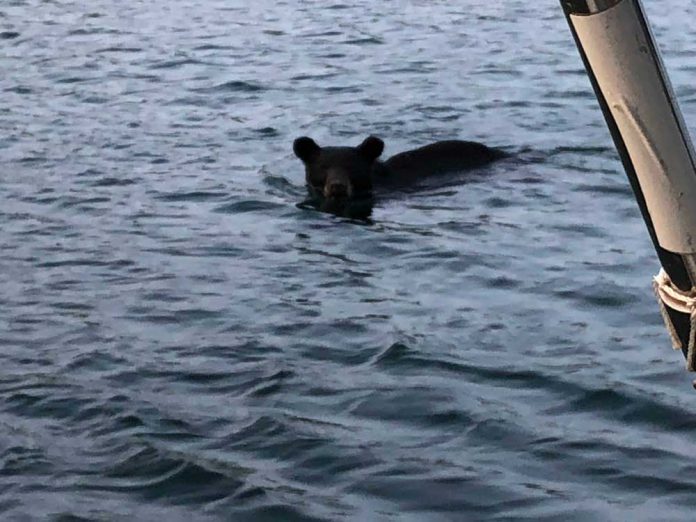MANITOULIN—The battle is far from won, but thanks to the determined staff of the Phragmites Project and their hardy volunteers, along with a strong contingent of landowners and volunteers during Phragmites Week, strong inroads have been made toward repulsing the Manitoulin beachheads of this invasive reed species.
“We were on Cockburn Island all this week doing phrag,” said project leader Biologist Judith Jones of Winter Spider Eco-Consulting. “We cut a huge patch out of Ricketts Harbour with the help of local Cockburn volunteers. I haven’t had time to tally up the Phrag Week stats yet, but we hosted five work bees, cleared phragmites from the mouth of Rogers Creek with the help of local volunteers, made two house calls and were shown a lot of phrag on the shore between Honora and Freer Point. We started this new area, but it will be an ongoing work site for next year. Some very grateful landowners gave us a canoe—which we really needed—for our efforts.”
This year the efforts to combat phragmites along Manitoulin’s shores has received some hefty reinforcements in the form of Truxor machines. The Truxor, a waterborne harvesting machine, was such an integral part of last year’s successful efforts that this year the Phragmites Project has doubled down.
“We’ve got two Truxor machines coming next week and I’m still busy organizing everything for that effort,” said Ms. Jones earlier this month. “Monday the machines will be working in South Bay on the Wiikwemkoong side, while Tuesday and Wednesday they will be at the mouth of Blue Jay Creek. You can see some of the operation at the Manitou River boat launch. Last year we removed 11 dumptruck loads from Michael’s Bay. This year I hope to more than double that.”
In fact, Ms. Jones reports that she anticipates the huge pile of harvested phragmites might even surpass her earlier estimate, but that it will take at least 20 dumptruck loads to haul the material away.
The Manitoulin Phragmites Project brought in the two Truxors, specialized amphibious cutting machines, from the Invasive Phragmites Control Centre, a not-for-profit organization. “With two machines, one runs a reciprocating cutter on the front, while the other runs a hydraulic raking attachment to pick up the cut material,” said Ms. Jones. “They are operated by Green Stream.”
Complementing the work of the Truxors was a large barge hired from the Paul Sheppard and Sons construction company and a host of land-based workers.
“While the Truxors are in the water, there was a group brush cutting on the land,” said Ms. Jones. “This was very heavy manual work but when you step back and take a look at what has been accomplished I think most people would agree it was worthwhile.”
“We had great success during Phrag Week,” said Ms. Jones. “The volunteer effort was really, really good. Manitoulin Streams were out in force helping us and we also had a number of local land owners at Blue Jay Creek.”
Ms. Jones had high praise for the support the effort has received from the Township of Tehkummah. “Tehkummah has played a huge part in making the efforts a success,” she said. “They are making a huge contribution and the staff has been very helpful.”
Funding for the Phragmites Project has come one-half from the federal government, one-third from the province and the rest from private funding sources, explained Ms. Jones. The municipal contribution has been largely in helping to remove the phragmites that has been cut from the shores.
Those wishing to contribute to the project financially are urged to contact Manitoulin Streams, which is able to issue tax receipts for donations.
Those seeking more information about the efforts to remove phragmites from Manitoulin’s shorelines, or who wish to report stands they have discovered on their own property or along the Island’s shorelines are urged to contact manitoulinphrag@yahoo.com.
“We can beat phragmites,” agreed Ms. Jones. “We may never get rid of phragmites entirely, but if we work together and remain vigilant, we can mitigate its impact on the natural ecology of Manitoulin Island.”





